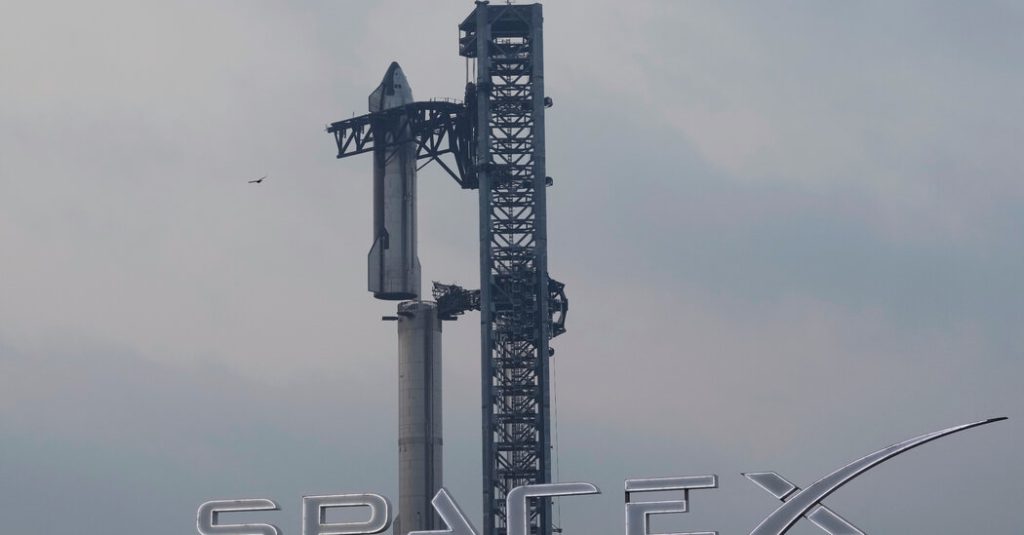Starship, the enormous rocket developed by Elon Musk’s SpaceX, took off on a fourth attempt to reach space and return after the previous three flights ended in explosions. Despite the setbacks, each flight has progressed further than the last, showcasing SpaceX’s break-it-then-fix-it engineering approach. NASA Administrator Bill Nelson supports Starship’s development as it is crucial for landing astronauts on the moon.
The latest Starship launched from the SpaceX site in South Texas with no crew on board. Although one of the booster’s engines did not ignite, the others powered the vehicle towards space. The booster successfully separated from the upper Starship, which continued its journey. The Super Heavy booster softened its splashdown to the Gulf of Mexico, achieving one test flight objective. The upper Starship stage’s ability to re-enter Earth’s atmosphere from space was yet to be completed.
Starship, with the Super Heavy booster, is the tallest and most powerful rocket ever built. It stands at 397 feet tall with 33 Raptor engines generating 16 million pounds of thrust. Elon Musk envisions Starship as a Mars ship for settling on the Red Planet and a lunar lander for NASA’s moon missions. SpaceX also plans to use Starship for deploying the next generation of Starlink satellites and reduce the cost of sending payloads into orbit through reusability.
The primary goal of this flight is to ensure Starship can withstand the maximum re-entry heating without burning up as it reaches orbital speeds over 17,000 mph and an altitude of 145 miles. Landing in a remote location in the Indian Ocean and softly landing the Super Heavy booster in the Gulf of Mexico are additional objectives. Reusability is a key feature of Starship that could potentially drastically reduce the cost of sending payloads into space.
During the last flight in March, Starship reached speeds fast enough to enter orbit, showcasing the successful hot-staging separation. Although the ascent went well, Starship began rolling out of control at the highest point of its trajectory. The spacecraft disintegrated 49 minutes after launch, with the Super Heavy booster failing to simulate a landing due to engine shutdowns. SpaceX attributed these failures to propellant flow blockages and made changes to address the issues moving forward.
SpaceX continues to make progress with each Starship launch, with the ultimate goal of making space travel more efficient and cost-effective. The ongoing development of Starship is crucial for future exploration missions to Mars, the moon, and beyond. SpaceX’s break-it-then-fix-it engineering approach demonstrates its commitment to innovation and advancement in space technology. With the potential for Starship to revolutionize space travel, the continued testing and development of this groundbreaking rocket are essential for the future of space exploration.








